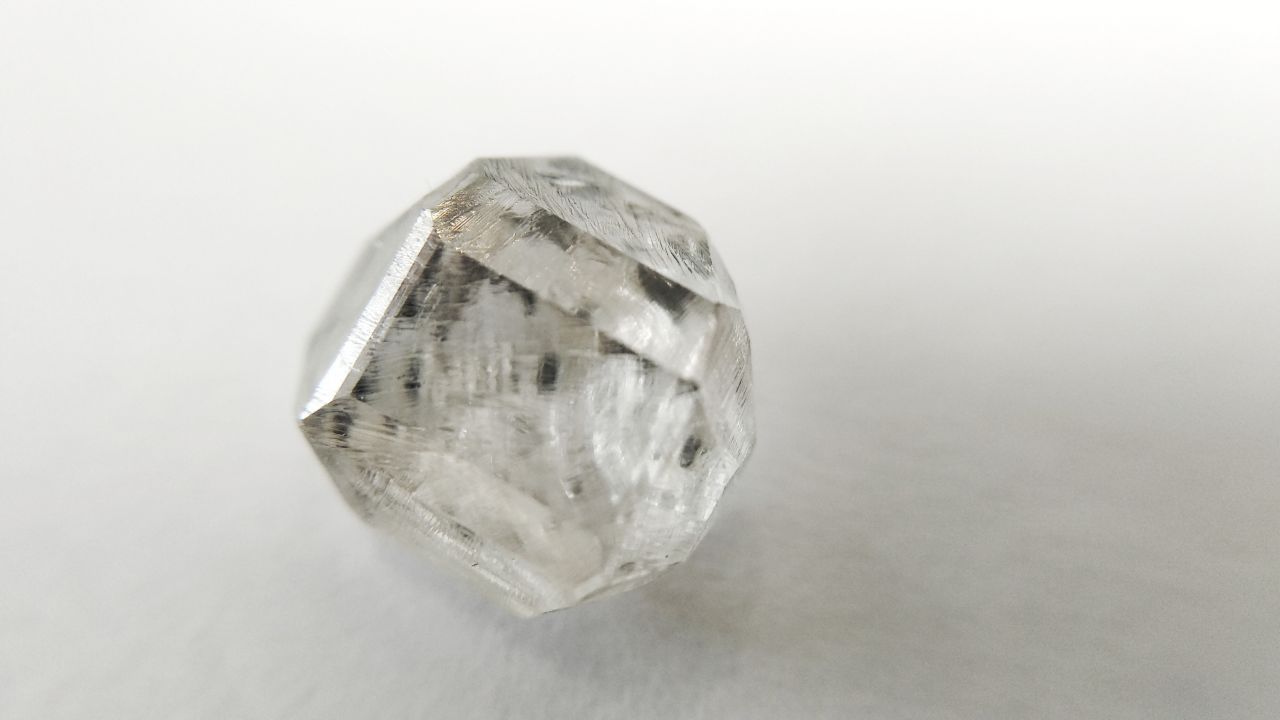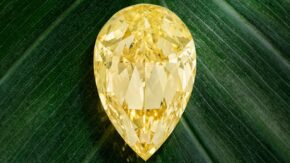The diamond industry has been involved in a long-standing dispute over the proper terminology for man-made diamonds. Meanwhile, jewelry retailers that deal with the public say they are more concerned about transparency and disclosure when it comes to presenting these gems to their customers.
The vocabulary debate resurfaced earlier this month when the French government required that all man-made diamonds must be described as “synthetic.” The country also restricted the use of the word “diamond” with no descriptor preceding it to mined stones.
The diamond industry is treating the development as a victory.
“We praise the decision of the French government to insist that all stones other than natural diamonds be called ‘synthetic,’” responded Yoram Dvash, president of the World Federation of Diamond Bourses (WFDB).
The French Ministry of Economics and Finance’s decision came after a long and thorough process, said Iris Van der Veken, executive director and secretary general of the Watch & Jewellery Initiative 2030 (WJI 2030). This included consultation with the French Union of Jewelry, Goldsmithing, Stones and Pearls (UFBJOP), which represents the country’s jewelry and gem industry.
“WJI 2030 believes in transparency and the integrity of the supply chain, and rules and regulations must be complied with at all times,” Van der Veken said in a statement to Rapaport News. “Disclosure of product characteristics is a key component for consumer confidence.”
The term “synthetic” is commonly used in the country to describe man-made diamonds, said Antoine Borde, CEO of De Beers’ lab-grown diamond jewelry brand, Lightbox, which doesn’t distribute its product in France.
“There was a question raised around changing this to ‘lab-grown diamond,’ which in the French language doesn’t really have a suitable translation. Synthetic is what describes it best for French consumers, and they are accustomed to this terminology being used for a lab-grown diamond,” Borde said in an email. “I will continue to use the term ‘lab-grown diamond,’ as this is now commonly used by consumers. This, of course, needs to be adapted to each language and market.”
In the US, the Federal Trade Commission (FTC) approved “laboratory-grown” in its “Jewelry Guides” as a term that can be used to market man-made diamonds. It removed “synthetic” from the monikers that it allowed. Lab-grown or laboratory-grown is the widely accepted term for man-made diamonds in the US and much of the world.
However, for some retailers, clarity and fully conveying the product are more important than terminology.
“The wholesalers, the diamantaires, the various organizations, from the WDC [World Diamond Council] to the World Federation of Diamond Bourses, are all going about it the wrong way. It really doesn’t matter what you call it. To me, it’s about transparency,” commented David Mazer, director of sales and training, and a diamond buyer, at Marks Jewelers, which has stores in Montgomeryville, Pennsylvania, and Mount Laurel, New Jersey. “You can call it applesauce, but I still have the obligation to share with the public exactly what it is they’re buying. To make certain they fully understand where their hard-earned dollars are going.”
Ultimately, the customers decide what’s best for them, added Rich Goldberg of Safian & Rudolph Jewelers in Philadelphia, Pennsylvania.
“I think many in our industry have gotten too caught up over what we should call these man-made diamonds. In my opinion it doesn’t really matter,” Goldberg says. “I personally train my staff to educate the customer first and understand the difference between natural and lab-grown. We focus on transparency and building trust. The customer can buy whatever they want.”
Danish jewelry brand Pandora, which made headlines in 2021 when it announced it would only use man-made diamonds in its jewels, prefers the term lab-grown diamond.
“A diamond is a diamond, no matter whether it is grown in a lab or comes out of the ground,” Mads Twomey-Madsen, senior vice president of Sustainability and Communications at Pandora, stressed in an email. “Lab-grown diamonds are identical to mined diamonds but are grown above ground. Just as ice from the freezer is not fake, but is the same as ice from nature. This is backed by leading institutions such as the US Federal Trade Commission, that have stated that lab-grown diamonds are not synthetic or false, but real diamonds. Calling lab-grown diamonds ‘synthetic’ is misleading.”
Douglas Meadows of David Douglas Diamonds & Jewelry in Marietta, Georgia, was satisfied with calling these diamonds lab-grown as well. Like other jewelers interviewed, he sells both natural and lab-grown diamonds. He said the two terms commonly used for diamonds in the US properly distinguish between them. The terminology is distinctive and simple for consumers and jewelers.
“The use of the lab-grown name has been well received by the consumer,” Meadows noted. “I don’t feel like I’ve had instances where people were confused on what they are buying.”
Meadows was an early adopter of lab-grown diamonds, taking four trips to India to watch the manufacturing process of lab-grown and natural stones. “From the cutter’s perspective you can’t tell the difference,” he observed. He had some practical concerns if the “synthetic” name returned, or another name was used. “What about diamonds that are inscribed as lab-grown on the girdle and their documentation?” he asked.
“I like the term lab-grown. It works for us. Anything else, and all you’re doing is confusing people,” he continued. “I’m all about giving consumers a choice. I present options and let them choose. My calling is to make sure they get the correct information on both sides of the fence.”
Robert C. Ernst, Jr., of Ernst Jewelers in Huntsville, Texas, agreed that transparency and consistency in terminology were what’s important. “As far as the synthetic deal, I don’t have a comment on it,” he said. “It’s important that the words being used are consistent. That everyone is calling them the same thing, so we are not confusing our customers.”
Ernst doesn’t promote lab-grown diamonds but started offering them about two years ago based on customer demand. He, like others, said he preferred natural diamonds.
Mazer is a fourth-generation jeweler and an American Gem Society (AGS) board member. He thinks natural diamonds are a better choice for most consumers.
“I am very pro naturally mined diamonds,” he said. “I think it’s a much better value to the consumer. Everything’s an asset and that’s not what a laboratory-grown diamond is.”
Yet Goldberg and others pointed out that the affordability of lab-grown diamonds had brought in younger customers who normally wouldn’t have shopped for jewels.
“A few years ago, the industry was worried that millennials and Gen Z-ers were not buying diamonds, preferring travel and buying a home,” he explained. “Lab-grown diamonds have created this opportunity for younger generations to finally come into our showrooms to get the look they want for a price they can afford. Now that they have broken the ice, they can become jewelry customers for life.”
Main image: A lab-grown rough diamond. (Shutterstock)
Stay up to date by signing up for our diamond and jewelry industry news and analysis.



